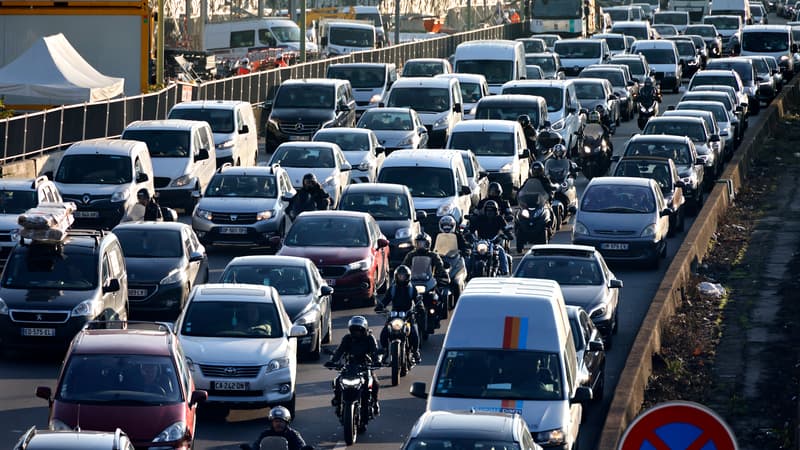In traffic jams or heavy traffic, cyclists generally do not stay in traffic. This traffic between lanes is not authorized by the Highway Code, but it has been tolerated for about ten years. Since 2016, it is even officially a road safety experiment, with a framework that authorizes it in 21 French departments.
End of intermediate files on January 1, 2025?
But this exceptional regime could end on December 31. After having been extended until this date last September, the experiment must be the subject of a new decree to survive in 2025. However, without a Minister of Transport and, in general, without a government yet appointed, it cannot be adopt any decree.
Traffic between the lines would therefore automatically stop on January 1, 2025, in the absence of this legal framework.
A practice that will continue no matter what.
Except, in reality, this probably won’t be the case. With this practice completely trivialized, it would be surprising to see an avalanche of fines falling on two or three wheels from the beginning of next year. In theory, a motorcyclist risks a fourth class fine (135 euros flat rate) and the withdrawal of 3 points from his license.
On the Road Safety side, we simply indicate that a new government could be appointed in the coming days, before December 31, and that therefore an extension decree will be validated.
“It is quite a benefit for the motorcyclist, we are certainly less protected but we arrive on time. And it is the only solution to arrive on time to our appointments, at the construction sites,” a two-wheeled driver explains to BFMTV.
Traffic between lines that can sometimes create tension between drivers.
“Sometimes we see motorcyclists who, while we are stopped or at 5 km/h, go more than 100 km/h, it is very dangerous,” testifies a motorist.
However, there is a speed differential to respect:
“Circulation between lanes is practiced at a maximum speed of 50 km/h, with a differential of 30 km/h with respect to other vehicles,” indicates the specific page of the official Road Safety website.
With car traffic slowing to 5 km/h, a two- or three-wheeler driver should not exceed 35 km/h.
Long-awaited legalization
“We are now waiting for the next ministers to be able to continue working with them and, normally, circulation between the lines will be legalized or a new experiment will be postponed, but in no case is it prohibited,” Jean-Pierre said. BFMTV Marc Belloti, coordinator of the French Federation of Angry Bikers.
Legalization must be decided precisely on the basis of this experiment carried out since 2016. In fact, a study by Cerema, a state agency, is expected to take stock of this practice and integrate it, or not, into the Highway Code.
Staying in a line of idling cars remains dangerous depending on two-wheel associations, with the risk of not sufficiently anticipating the sudden braking of a car, for example. Another argument in favor of this legalization of traffic between lanes would be taught when obtaining a driving license and would also clarify possible conflicts with insurers in the event of an accident.
“The example” of the Paris ring road
But why think that even without a legal framework, the practice will continue? We can cite the example of the Paris ring road, which has increased to 50 km/h since October 1.
This reduction in the limitation should, in theory, give rise to a prohibition of traffic between lanes, which is only authorized on the axes in which the maximum authorized speed is greater than or equal to 70 km/h, according to the legal framework of the experimentation.
However, in reality, this circulation between the lines is still practiced and there is no sanction that sanctions it.
Source: BFM TV


